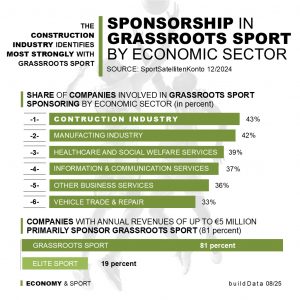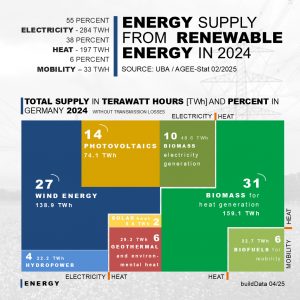
The WOOP(P) Analysis
Strategic thinking is considered the supreme discipline and must be learned. Many of us find this discipline difficult, especially since the problems to be broken down and solved are often not trivial and frequently have an emotional impact on us. In our articles, we show you how it works, which tools you need, explain them and also make it clear that good strategic thinking also depends on your self-discipline. In this article, you will learn more about WOOP analysis.
We have to make countless decisions every day, both at work and in our private lives. Many of these are routine and happen subconsciously. Our brain works in autopilot mode. But what about far-reaching, difficult decisions and problems? These often require strategic thinking.
Let's first clarify what we mean by strategy and strategic thinking: In general terms, a strategy is a detailed plan of action designed to achieve a goal. Strategic thinking is the ability to anticipate future developments, define goals based on them, plan the steps necessary for the future, think through complex issues critically and creatively, and make the right and effective decisions when implementing the plan in uncertain, constantly changing situations.
Why do we need strategic thinking and strategies in the first place? Well, this quickly becomes clear when it is claimed that, in general, no plan of action is necessary to achieve a goal. Each of us will want to correct this statement and consider a plan to be necessary. After all, who wants to leave their actions and deeds to chance?
So, to achieve a goal, you need a plan. A plan must be planned, which requires the human ability to mentally anticipate the steps that will bring us closer to our goal.
A good strategy is always a plan that contains the following basic elements:
- Develop a goal or at least a direction from a vision (a desire).
- Gather, analyse and evaluate information about the initial situation and the desired situation, and develop hypotheses.
- Define development steps, constantly question them and adapt or correct them if necessary.
- Analyse, evaluate and deploy the necessary resources.
- Estimate the time required and monitor time frames and milestones.
Strategic planning therefore requires more than just the ability to envisage the end result and the possible consequences before taking action. Strategists need self-discipline to think through all the steps thoroughly and carefully, act consciously and apply a toolbox of valuable strategic tools consistently and confidently.
We took a closer look at one of these basic tools, the WOOP method, and added a P to it. The WOOP method is a simple tool from the strategy toolbox, suitable for strategic thinking and action on a small scale, and is a procedural method. It is therefore not a mega-tool for untangling complex relationships or planning mega-projects. Rather, it is an effective tool for achieving personal goals with constructive optimism.
WOOP stands for Wish – Outcome – Obstacle and Plan. Developed by Gabriele Oettinger, the method focuses consciously on existing and expected obstacles and on a plan to prevent difficulties or eliminate them in a targeted manner right from the start when defining the goal.
Here's how it works:
W – Wish: Define what goal you want to achieve and by when.
O – Outcome: Imagine what it will be like when you have achieved your goal.
O – Obstacle: Ask yourself what obstacles stand in your way.
P – Plan: Think about how you can remove the obstacles. Then prevent the obstacles with concrete measures (Plan 1), systematically remove them in Plan 2 and define good opportunities to do so in Plan 3.
Very important: Strategy is not just thinking, but also writing. So write everything down systematically in your notebook. This will help you sort your thoughts and give you a guideline for your actions in the chaos of everyday life.
Particularly important: start immediately with the most important step. Without taking the first step, your journey will not begin and your goal will remain just a wish.
That is why we have expanded the WOOP method with another P, which stands for PROMPT. So don't wait in Plan 3 for good opportunities, but define the first three actions in concrete terms and keep them as simple as possible.
Don't set the bar too high for your first actions. The goal is to start your journey promptly and easily in order to achieve the big one.
Here is a simple example of how to use the WOOPP method:
Wish – You want to move up in your company and take a permanent position in the international sales team.
Outcome – You can communicate confidently and skilfully in the required foreign languages. Your solid language skills also allow you to grow professionally as a salesperson. Your new team leader is so impressed with your skills that you regularly accompany them on important business trips.
Obstacle – You lack the necessary language skills. You are also very busy at work. Time is short. Furthermore, you have only had limited contact with the international team leader so far.
(You give yourself exactly one year to achieve your goal).
Plan 1a - You will continue your language training.
Plan 1b - You will intensify your contact with the international team leader.
Plan 2a - You will take a language course, mainly in intensive classes on weekends. You will also use online resources.
Plan 2b - You will go on a language trip during your holiday and get to know the country and its people in one of the company's core markets.
Plan 2c - At your company's summer party in three weeks, you will network more intensively with the international team management.
Plan 2d - At your next feedback meeting, which is due in six months, you will discuss your ambitions and suggest a trial period of one to three months.
P – PROMPT - Download the language app of your choice and start with the first lesson. Find out about language trips and decide on a country to focus on.
Even though the WOOP method is characterised by an optimistic approach, remain realistic. Secure your big goal with intermediate goals. This will allow you to progress step by step towards your actual goal.
Be careful not to fall into a hole when you actually reach your goal; quickly define a new one. Perhaps using the GAP method, which we will explain in more detail in one of our next posts.
Find out more about these topics in the links below.
































































